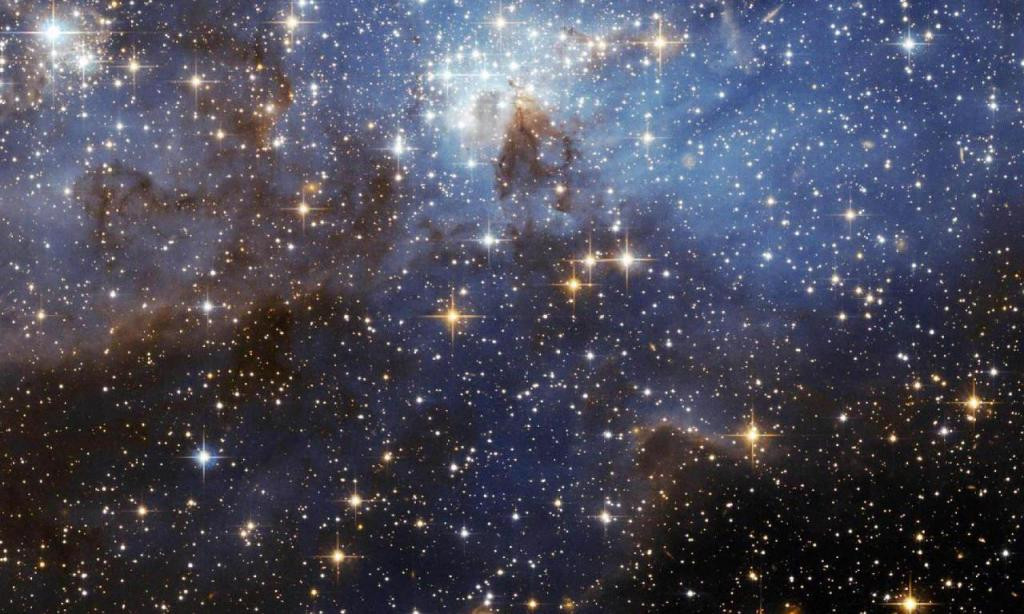Did you answer the question: How many stars in the sky?
Perhaps this is one of the most difficult questions to answer because there are so many stars in the sky that we cannot count. So, with the help of modern technology, will astronomers count and give the correct answer? Let's find out.
Considering the macro-scale of the entire galaxy in the universe.
There are about 170 billion galaxies extending in a radius of more than 45.7 billion light-years in the visible universe (observable universe - a collection of all the phenomena and phenomena that can affect children. People and Earth that humans with astronomical means can identify at the present time.

Each galaxy has a different number of stars. Giant galaxies like eclip galaxy can hold up to 100 trillion stars. Spiral galaxies may contain more than 1 trillion stars. And smaller galaxies like dwarf galaxies are about several trillion stars.
So what about in our Milky Way galaxy ? Located in the small corner of the visible universe, the Milky Way contains about 400 billion stars.
According to astronomers calculations:
The star is in the visible universe = the average number of stars in each galaxy x the number of galaxies in the visible universe = 1,000,000,000,000,000,000,000,000 (10 powers of 24) stars.
This is an academic number based on theoretical calculations but indeed a very large number.

From the micro level from the "sky" is the night sky where people can observe with the eyes at a position on Earth.
Under optimal observation conditions, humans can only observe about 5000 stars in the night sky. Under the influence of surrounding factors (unfavorable weather, air pollution .) we can only observe half of these stars about 2500 stars .
You should read it
- The interaction between the Milky Way and a satellite galaxy is creating many new stars
- Admire the majestic spectacle of swirls of dust and gas in nearby galaxies
- Spectacular views on Google Sky
- Discover how young children are 'asking and' staring their parents to develop
- The moment two galaxies collide in a super rare image taken by the Gemini North telescope
- The 8 largest objects in the universe
- Hubble Telescope extremely rare photo of the moment of the Supernova explosion
- The most intense battle in the history of the Milky Way was recorded
May be interested
- 02h54 tonight will appear Moonlight moon harvest - 8 new years once
 8 years later we can observe the phenomenon of full moon eclipse similar to the imminent phenomenon on 02h54 tonight, september 17, 2016.
8 years later we can observe the phenomenon of full moon eclipse similar to the imminent phenomenon on 02h54 tonight, september 17, 2016. - Top 5 planets may be our 'new houses' in the future
 recently, scientists have discovered proxima b called the second earth may exist life. so, can people in the future settle in planets other than earth?
recently, scientists have discovered proxima b called the second earth may exist life. so, can people in the future settle in planets other than earth? - Discover incredible facts about the Moon
 the image of the moon every night appearing in the sky has become too familiar to us but it is a distant planet hidden from many mysteries waiting for people to discover.
the image of the moon every night appearing in the sky has become too familiar to us but it is a distant planet hidden from many mysteries waiting for people to discover. - Discover the terrible war between two giant black holes in the universe
 recently, scientists have discovered a horrific battle of two giant black holes in the galaxy markarian 1018, 555 million light-years from earth.
recently, scientists have discovered a horrific battle of two giant black holes in the galaxy markarian 1018, 555 million light-years from earth. - Travel space with splendid images of the universe
 beautiful, rare moments of the universe are captured by spacecraft, telescopes and telescopes that will travel you to spaces never seen before.
beautiful, rare moments of the universe are captured by spacecraft, telescopes and telescopes that will travel you to spaces never seen before. - Amazing blue meteor attacks the red heart nebula
 this is a strange and impressive astronomical phenomenon that astronomers can observe.
this is a strange and impressive astronomical phenomenon that astronomers can observe.






 Answer the stupid question game
Answer the stupid question game Admire the rare moment Venus and Jupiter 'meet' each other in the sky
Admire the rare moment Venus and Jupiter 'meet' each other in the sky The smart answer when asked in an interview: What is your expected salary?
The smart answer when asked in an interview: What is your expected salary? When asked 'Why should we choose you', this guy's unresponsive answer conquered Microsoft recruiters
When asked 'Why should we choose you', this guy's unresponsive answer conquered Microsoft recruiters The surface of Venus: Why is Venus the hottest planet in the solar system?
The surface of Venus: Why is Venus the hottest planet in the solar system?